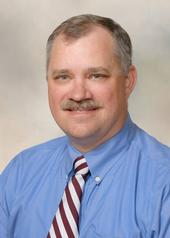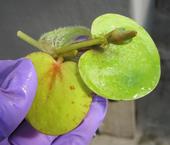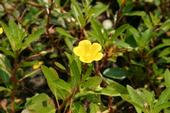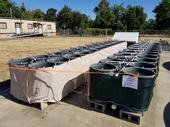- Posted by: Guy B Kyser

Dr. John Madsen (USDA-ARS Invasive Species and Pollinator Health, Davis, CA) just received the 2020 Outstanding Scientist Award from the Northeast Aquatic Plant Management Society. The letter of recognition says, among other things, "The Society recognizes you for your ongoing support of students, and your commitment, contributions and dedication to the field of aquatic plant management."
Dr. Madsen has participated in Weed RIC since 2014. He has developed a program studying phenology and management of waterhyacinth, Brazilian egeria, curlyleaf pondweed, and other species, concentrating mostly on the Sacramento-San Joaquin Delta.
- Posted by: Guy B Kyser
Occasional good news on the weed front...
"SACRAMENTO — The California Department of Food and Agriculture (CDFA), working in cooperation with the Shasta County Agricultural Commissioner's office, has eradicated two hydrilla infestations within the cites of Redding and Anderson, ending a quarantine that began on July 18, 1996. Hydrilla, an invasive aquatic weed, was last detected in Shasta County in 2006."
https://www.morningagclips.com/hydrilla-eradicated-from-shasta-county/
- Author: Christy Morgan
- Posted by: Guy B Kyser

South American spongeplant (Limnobium laevigatum) is a free-floating, freshwater aquatic plant that has been introduced to the Sacramento-San Joaquin Delta. Spongeplant can propagate sexually through seed production and asexually through the development of stolons that produce new plants. This vegetative growth results in floating mats of plants that can fragment and spread with the water current.
Between August 2017 and March 2018, two studies were completed to determine the growth potential of South American spongeplant at different temperatures. These studies were designed to investigate how changes in the Delta's water temperature may affect the species' ability to proliferate and spread.
Plants were...
- Author: Dr. Paul Pratt
- Editor: Guy B Kyser

It may be widely understood that most aquatic and wetland weeds are spread by water currents, but the patchwork of colonizing exotic plants can be puzzling. Why do weeds establish in some places but not others? Generally, the number of propagules (seeds or plant fragments) moving in a watershed is assumed to increase downstream. This assumption influences management decisions, such as prioritizing management efforts between upstream and downstream areas of a river to reduce reinvasion.
Uruguay waterprimrose (Ludwigia hexapetala) is an emergent aquatic weed from South America which has invaded many riverine wetland ecosystems in the western US and Europe. This is a clonal plant which can reproduce asexually via shoot...
- Author: John Madsen
- Posted by: Guy B Kyser

We are doing a trial of eleven aquatic herbicides for their potential to control Brazilian waterweed (Egeria densa). The active ingredients being tested are bispyribac sodium, carfentrazone, copper-ethylenediamine complex, diquat, dipotassium salt of endothall, the dimethylalkylamine salt of endothall, florpyrauxifen-benzyl, flumioxazin, fluridone, imazamox, and penoxsulam. The study is a twelve-week static exposure of a single initial treatment, using all of the 50 tanks in the mesocosm facility. While not all of these aquatic herbicides would be allowed in the Sacramento/San Joaquin River Delta, we should at least know what might be useable in other habitats near the Delta. Currently, California State Parks Division of...


